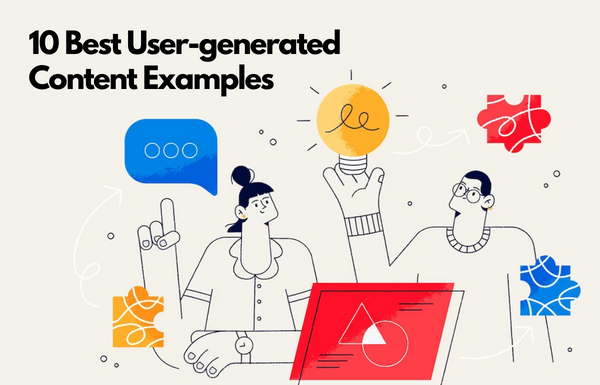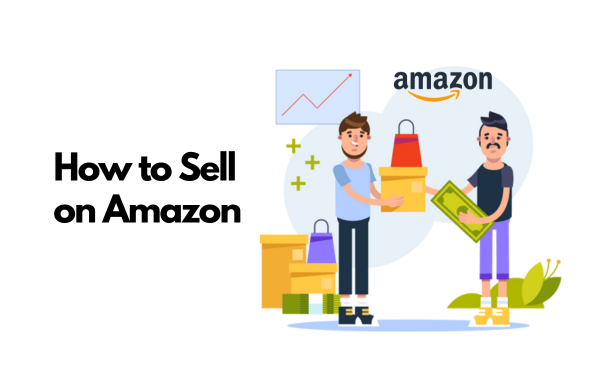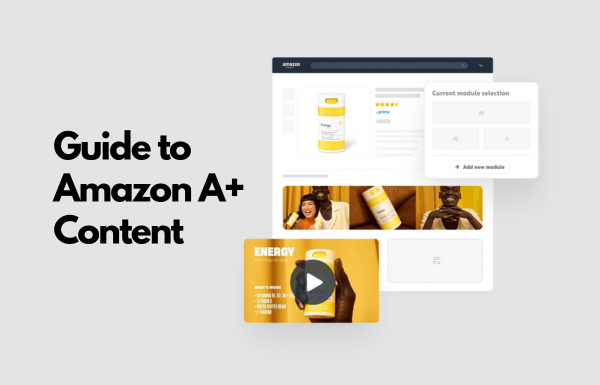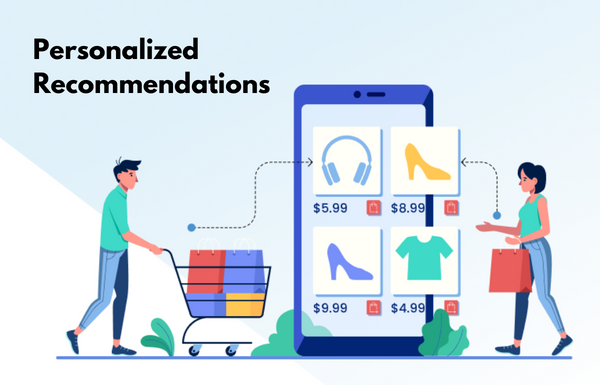Have you seen people sharing the restaurant they recently checked into, what food they had and how were their overall experiences on social media? This is nothing, but the perfect example of User-generated Content (UGC).
The online shopping landscape has evolved significantly over the years, and one of the most significant changes is the growing influence of User-generated Content (UGC). From product reviews to social media posts, customers have become the biggest advocates for brands and products.
In fact, UGC has become such an important part of eCommerce that brands are actively seeking out ways to incorporate it into their marketing campaigns. And why wouldn’t they? UGC not only helps build trust and credibility with customers but also provides valuable insights into customer preferences and behaviors.
So, if you’re wondering how some of the biggest brands are leveraging UGC to drive engagement and sales, you’re in the right place. In this blog, we’ll explore the best UGC eCommerce examples that are making waves in the industry.
From clothing to cosmetics to food, you’ll learn how brands are using UGC in innovative ways to showcase their products and connect with their customers.
So, let’s get started!
What is user-generated content?
Let’s make it simple: User-generated content (UGC) refers to any form of content, such as images, videos, reviews, or social media posts, that is created by customers or users of a product or service.
UGC is typically shared on social media or other online forums and can be made voluntarily or solicited by brands or businesses. This type of content is considered more authentic and trustworthy than traditional forms of advertising, making it an excellent way to build trust and credibility with your audience.
Not only that, but UGC provides valuable insights into customer preferences and behaviors, which can help you improve your products, services, and marketing strategies.
Let’s check out the various types of UGC you can use!
Types of user-generated content
If you want to utilize the power of user-generated content, you must know first what are types of UGC available and which types will work best for your eCommerce business.
Here are some types of user-generated content:
1. Product reviews

Product reviews are the most common type of UGC for eCommerce businesses. Customers leave reviews of the products they have purchased on the product page or on the platforms where the brands are listed.
Similarly, they rate products on a scale, allowing others to see the overall rating of the product. The buyer’s opinion and ratings give others insight into the quality, features, and value of the product.
You can also encourage customers to upload photos of themselves using or wearing the products can help other potential buyers see how the product looks in real life.
Also Read: Top 10 Shopify Product Reviews Apps for your Online Store
2. Social Media posts or mentions

People usually share photos of the products they’ve recently brought or mention the brand on social media channels. This can help to increase brand awareness, promote your products and provide visual evidence of their quality and effectiveness.
On the other hand, these posts and mentions inspire other users to buy and try the products once. Make sure you repost or share these post photos and mention them back on your other social media platforms.
Read More: Must-Have Shopify Apps for New Online Stores
3. Q&A’s on Community forums
An online forum allows customers to engage with each other and share their experiences and insights about the brand and its products.
Customers ask and answer questions related to the product, and other customers or the eCommerce business can provide answers. This will help resolve any doubts or concerns a potential buyer may have and make better decisions for their purchases.
For that, you must join online communities where your shoppers and target audience are available. One of the best examples is “Reddit”! Or else you can create your own online community where your customers can post their doubts.
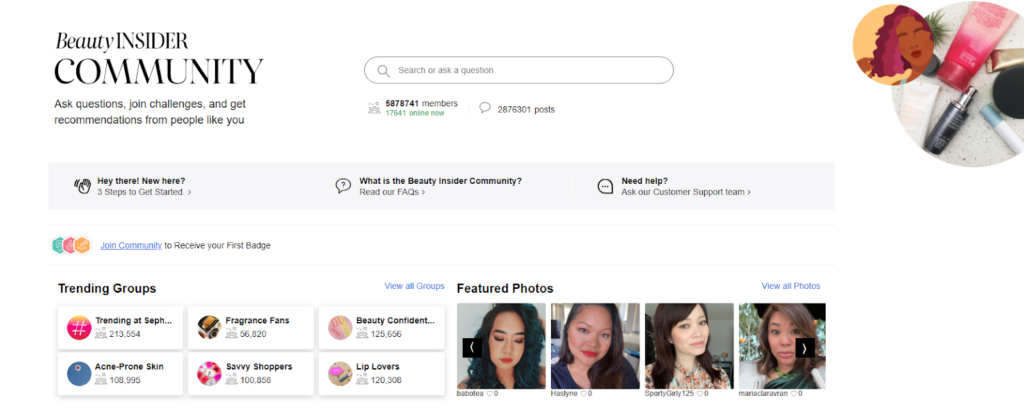
4. Customer Testimonials
If you have a single product store or selling services, customer testimonials would be better than product reviews. Customers submit testimonials about their experience with the eCommerce business, including customer service, shipping, and overall satisfaction.
You can ask for video testimonials or written testimonials from satisfied customers which can build trust and credibility for your brand.
5. DIY Tutorials

You may have seen YouTube videos on these before:
- DIY step guide to creating a stylish hanging planter
- Simple and budget-friendly home decor ideas
- Natural skincare and haircare recipes for a spa day at home
- Transforming old clothing into trendy new fashion pieces
- Easy and affordable woodworking ideas for beginners
or similar ones!
People create and share their own user guides where they highlight the products they use or make the most of them. This not only helps others understand how to use the product effectively but also helps to promote your products and increase brand loyalty.
6. Customer Stories

Many shoppers create videos showcasing the product or providing reviews and share their personal stories or experiences with the brand. Customer stories build an emotional connection with the audience. It also helps to increase engagement and create a more personal connection with the brand.
You can also encourage your existing customers to speak or write about their experiences with the product or the eCommerce business, providing valuable insights and opinions for others to read.
These were the most common types of user-generated content. Have you decided which would be more suitable for your online store?
Not yet? Don’t worry. The next section will help you to pick the best UGC form for your business.
Best user-generated content examples
Most successful eCommerce merchants use consumer-generated content as their marketing strategy to build a strong brand identity and gain new customers.
So, get ready to be inspired by some of the most creative and effective UGC eCommerce campaigns out there!
1. GoPro

GoPro focuses on user-generated content, as the camera allows people to capture their own adventures and share them online. Its user-generated content marketing strategies have been highly successful, as it has helped to establish the brand as a leader in the action camera market.
By tapping into the passion and creativity of its users, GoPro has been able to build a strong community and generate a wealth of engaging content that helps to promote the brand in a highly authentic and effective way.
2. Nike

Nike’s “Nike+ Run Club” app allows runners to track their runs and share them with the Nike community. Runners can join challenges and compete with friends and other runners worldwide.
Nike+ Run Club supports user-generated content campaigns by encouraging users to share their running activities on social media platforms using the app’s built-in sharing features. The app allows users to create personalized posts by adding photos, captions, and hashtags, which can then be shared on various social media platforms.
3. Under Armour

Under Armour’s “What’s Beautiful” user-generated content campaign invited female athletes to set fitness goals and document their progress on social media.
It was a social media-driven marketing campaign that aims to inspire and empower women to redefine what it means to be “beautiful” by focusing on strength, fitness, and achieving personal goals.
4. Sephora
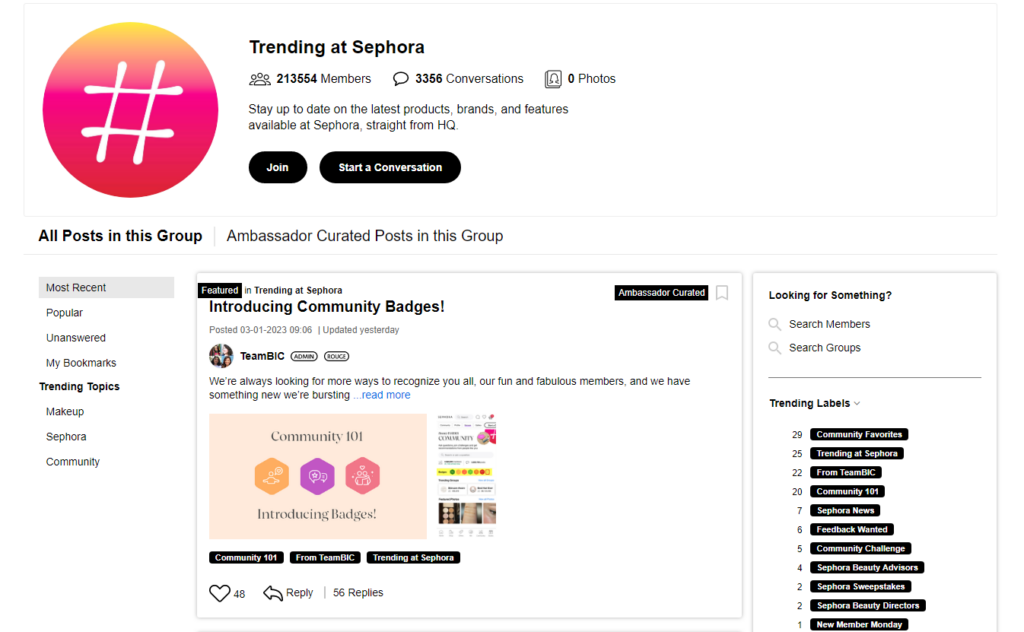
Sephora’s “Beauty Insider Community” allows customers can connect, ask questions, share advice, and swap beauty tips with like-minded people from all over the world.
This UGC not only provides valuable information for other customers but also serves as a powerful marketing tool for Sephora. The brand can feature this content on its website, social media channels, and in-store displays, helping to build trust and credibility with potential customers.
Sephora’s focus on UGC content also helps to make the brand more relatable and authentic to its customers. By showcasing real people with real experiences, Sephora is able to create a more genuine connection with its audience and establish itself as a brand that truly understands its customer’s needs and preferences.
5. Old Spice

Old Spice’s “#MenHaveSkinToo” user-generated content campaign invited fans to submit their own video responses to Old Spice’s commercials, resulting in a viral sensation.
This campaign challenged traditional gender stereotypes by encouraging men to take care of their skin and promoting skincare products specifically designed for men. The campaign emphasized the importance of self-care and self-expression, regardless of gender.
6. Lululemon

Lululemon’s “Here to Be” user-generated campaign invited customers to share their stories of how yoga helped them overcome adversity.
The campaign aimed to create more inclusive spaces for people of all abilities by partnering with non-profit organizations and offering yoga classes and meditation sessions for underserved communities.
This UGC campaign emphasized the importance of mental and physical wellness, regardless of background or ability level.
7. Sharpie

Sharpie’s “#SharpieArt” campaign encouraged people to unleash their creativity and showcase their artistic skills using Sharpie markers, by sharing their artwork on social media using the campaign hashtag.
It also invited customers to submit their own Sharpie art creations for a chance to be featured on the brand’s website and social media. The campaign aimed to inspire and celebrate self-expression and creativity through Sharpie markers.
8. Dove

Dove’s “#BlackHairIsProfessional” campaign encouraged women to embrace and celebrate their natural hair textures and styles in the workplace, challenging the stereotypes and biases that black women face regarding their hair in professional settings.
This is a prime example of how a brand can leverage UGC to enhance its marketing efforts and build a loyal following of engaged and enthusiastic customers.
9. Glossier

Glossier never misses sharing user-generated content on its social media channels, and it has become a cornerstone of its marketing strategy. By doing so, Glossier is not only able to showcase its products in action but also leverage the power of social proof, where real customers serve as brand ambassadors.
Glossier’s focus on UGC content has helped to build a strong sense of community around the brand, with customers engaging with each other and sharing their experiences.
This beauty brand has also launched several user-generated content campaigns, including the “#bodyhero” campaign, which featured diverse and inclusive images of customers using their body care products.
10. LEGO

LEGO’s “#BuildToGive” campaign was a great example of how user-generated content can be used to create a positive impact in the world. The campaign not only aimed to spread holiday cheer but also encouraged people to give back to their communities by building a gift and sharing it on social media using the branded hashtag #BuildToGive.
What made the campaign so effective was its ability to tap into the holiday spirit and encourage customers to give back in a fun and creative way.
These user-generated content examples must have helped you understand how UGC campaigns allowed many brands to directly engage their customers, raise awareness, and positively impact the world.
Do you want to launch a successful UGC campaign for your eCommerce brand? Let’s see how to do that in the section ahead!
How to run user-generated content campaigns?
Running UGC campaigns can be an effective way to engage with your audience, build brand awareness, and encourage user participation. If you haven’t been into user-generated content campaigns, then now it’s time.
Here are the step-by-step instructions to run a successful UGC campaign:
STEP 1: Define your objectives
Before launching a UGC campaign for your eCommerce brand, it’s important to define your objectives. Are you looking to increase brand awareness, generate user engagement, or promote a new product?
Clearly define your goals for encouraging customers to take interest in your UGC campaigns.
This will help you determine the type of campaign you want to run as well as the metrics you’ll use to measure its success.
STEP 2: Determine the type of UGC campaign
There are several types of UGC campaigns you can run, including photo contests, video contests, social media challenges, and user testimonials. Choose the type of campaign that aligns with your objectives and audience.
Also, clearly define the rules and guidelines for your UGC campaign, including the start and end dates, how users can participate, and any restrictions or limitations.
STEP 3: Prepare a theme for your UGC campaign

Determine a theme for your UGC campaign that’s relevant to your brand and resonates with your audience. It could be a holiday-themed contest, a challenge that encourages users to show how they use your product, or a hashtag campaign that asks users to share their experiences with your brand.
When choosing a theme for your UGC campaign, it’s important to consider what will resonate with your audience and align with your brand values. This can help build a sense of community around your brand and deepen the connection with your audience.
Whatever theme you choose, make sure it’s relevant, fun, and easy to participate in.
STEP 4: Promote your UGC campaign
Promotion is key to the success of your UGC campaign. Social media platforms, such as Instagram, Twitter, and Facebook, are excellent channels to promote your campaign and encourage user participation.
Use your brand’s social media accounts to announce the campaign and share posts from users who have already participated. You can also use email marketing to reach out to your existing customer base and encourage them to participate. Make sure to include a clear and engaging call-to-action (CTA) in all your promotional materials.
Your CTA should clearly communicate the benefit of participating and be easy to follow. Additionally, consider offering incentives, such as prizes or recognition, to further motivate users to participate in your campaign.
STEP 5: Launch your UGC campaign
All set to launch your UGC campaign?? If yes, let’s make it live.
But wait, make sure all the pieces are in place before you hit the launch button. Double-check that all the guidelines are clear and accessible to users and that all the technical aspects of the campaign, such as tracking and moderation, are working smoothly.
Remember to engage with users who participate in your campaign by liking, commenting, and sharing their content. This will not only show appreciation for their efforts but also help to build a stronger connection between your brand and your audience.
STEP 6: Monitor and moderate entries

Hundreds of likes, hundreds of comments, and much more….! Once your campaign is live, you start getting all of them.
But if you’re not getting it, it’s important to monitor and moderate entries to ensure they align with your brand and meet the campaign guidelines. You may also need to moderate comments and respond to user questions or concerns.
STEP 7: Share and showcase UGC
Once the campaign is done, give it a graceful closure. If it was a contest, announce the winners. If it was a video challenge, appreciate all the participants, and so on.
At the end showcase the best UGC content created on your website, social media channels, and other marketing materials. This will help build brand loyalty and encourage ongoing user participation.
Running a UGC campaign can be a fun and engaging way to interact with your audience and build brand awareness. By following these steps, you can create a successful UGC campaign that generates positive results for your brand.
Wrapping Up!
This is the fact that people love to show off and this directly or indirectly helps businesses to create valuable marketing content and promote their brand and products.
The power of UGC lies in its authenticity, relatability, and ability to connect with customers. So, if you’re an eCommerce business looking to take your marketing to the next level, consider making user-generated content into your strategy. With the right approach, UGC can help you build a loyal following and drive meaningful results for your business.
By featuring UGC on your website and social media platforms, you can establish trust and credibility with your audience, increase engagement and conversions, and create a sense of community among the customers.
